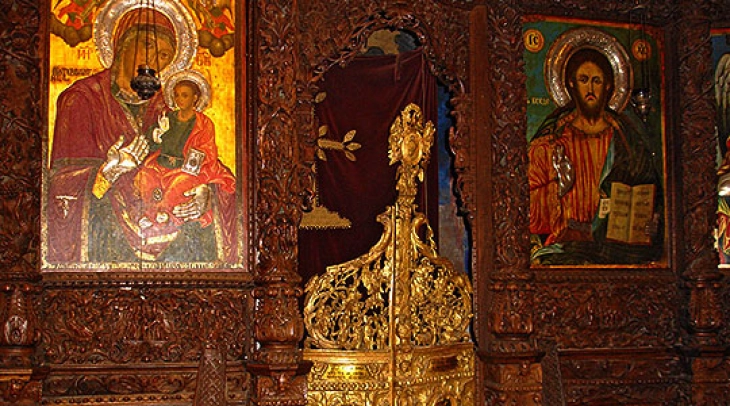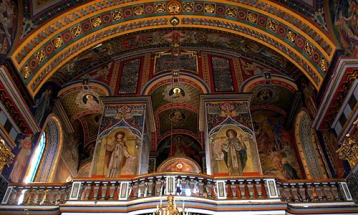Religious calendars
- He is called ‘the Lord’s brother’ because he was the son of righteous Joseph, the betrothed of the most holy Mother of God.

5 November 2024 (MIA)
Macedonian Orthodox Church Calendar
The Holy Apostle James, the Lord’s Brother
He is called ‘the Lord’s brother’ because he was the son of righteous Joseph, the betrothed of the most holy Mother of God. When Joseph was dying, he shared out his goods among his sons and wanted to leave a share to the Lord Jesus, the Son of the most holy Virgin Mary, but his sons opposed this, not reckoning Jesus to be a brother of theirs. James, though, loved Jesus greatly and announced that he would include Him in his share, counting himself to be indeed brother to the Lord. James was, from the first, devoted to the Lord Jesus. According to tradition, he went to Egypt with the most holy Virgin and Joseph when Herod tried to kill the newborn King. As soon as he heard Christ’s teaching, he began to live by it. It is said that, during the whole of his life, he ate neither fat nor oil, but lived only on bread and water, and he was chaste to the end of his days. He often kept a vigil of prayer at night. The Lord included him among his Seventy apostles, appearing to him after His glorious Resurrection, as the Apostle Paul testifies (I Cor. 15:7). He was bishop in Jerusalem for thirty years, and governed the Church of God with zeal. On the Lord’s instructions, he composed the first Liturgy, which was far too long for later Christians and was shortened by St Basil and St John Chrysostom. He brought many Jews and Greeks to the Christian faith, and even unbelieving Jews marvelled at his justice, nicknaming him James the Just. When Ananias became High Priest, he decided, along with other of the Jewish elders, to kill James as a preacher of Christ. One day, at Easter, when many people were gathered in Jerusalem, the elders told him to climb up onto a roof and speak against Christ. St James climbed up there, and began to speak to the people about Christ as the Son of God and the true Messiah, and of His Resurrection and eternal glory in heaven. The infuriated priests and elders cast him down from the roof, and he was badly injured though still alive. A man then ran up and gave him such a vicious blow on the head that his brains spilled out. Thus this glorious apostle of Christ died a martyr’s death and entered into the Kingdom of his Lord. James was sixty-three years old when he suffered for Christ.
Catholic Calendar
St. Emeric
St. Emeric was declared a saint during a solemn historic event in Hungary in 1083 AD, 52 years after his death, due to his popularity in Hungary and Poland. With the approval of Pope Gregory VII, St. Ladislas King presided at the ceremony. His father, King Stephen I, was also canonised at this event. After attaining sainthood, St. Emeric was honoured as the model and patron of young men. In the ninth centenary of the death of Bd Emeric (Imre) was kept with solemnity in 1931 in Hungary. Not many reliable particulars of his short life are available. He was the only son of St. Stephen I, King of Hungary and wife Gisella. Stephen was a Magyar (Hungarian) and Gisella was Bavarian. Emeric was the last child born of their marriage and the only one to survive infancy. He was born in the year 1007 and was educated in Esztergom, Hungary, by a Benedictine monk, St. Gerard (Gellert) Sagredo. In baptism Emeric was named after his mother Gisella’s brother, Heinrich, King of Germany. In some sources St. Emeric appears under the name Henry. Emeric was destined to inherit the traditions of his ancestors, which on the maternal side were those of the German rulers of the Holy Roman Empire, and the paternal, the equestrian nomad tradition. When Emperor Conrad II planned to disendow the diocese of Bamberg he proposed to give the young prince Emeric an interest in the spoliation, but his father, Stephen would not allow this to happen. The Prince was buried in the Church, feast Nov. 4,1031, and many marvels were wrought at his tomb. Hungary was left without a direct heir to the throne. The bodies of father and son were “elevated” together in 1083, and he is generally referred to as Saint Emeric, but he is called only beatus in the Roman Martyrology, usually depicted holding a lily.











